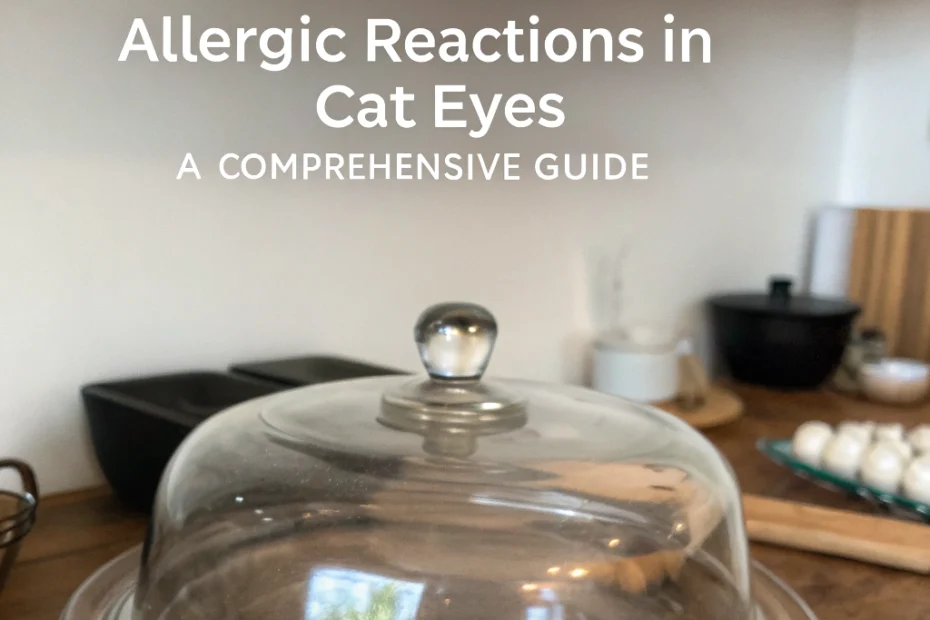At-a-Glance
Cats, like humans, can experience allergic reactions that affect their eyes. These reactions can cause discomfort and may lead to more severe health issues if not addressed promptly. Understanding the signs, causes, and treatments for eye allergies is crucial for maintaining your feline companion’s health. Here’s a quick overview:
- Common symptoms include redness, swelling, and discharge.
- Allergens can be environmental, such as pollen or dust.
- Treatment involves identifying allergens and managing symptoms.
- Consultation with a veterinarian is recommended for proper diagnosis.
How to Choose
When selecting treatments or preventive measures for your cat’s eye allergies, consider the following factors:
- Diagnosis: Ensure a proper diagnosis from a veterinarian to identify the specific allergen.
- Severity: Assess the severity of the symptoms to determine if over-the-counter solutions are sufficient or if prescription medication is needed.
- Environment: Minimize exposure to known allergens in your home.
- Products: Look for hypoallergenic products such as cat shampoos or cleaning agents.
Consult your veterinarian about the best options for your cat’s specific needs.
Safety & Setup
Ensuring a safe and suitable environment is essential for managing and preventing eye allergies in cats. Here are some tips:
- Allergen-Free Zone: Create a space in your home that is free from common allergens like dust and pollen.
- Regular Cleaning: Maintain a clean home by vacuuming regularly and using air purifiers.
- Proper Ventilation: Ensure good air circulation to reduce indoor allergens.
These measures can help reduce the risk of allergic reactions and improve your cat’s overall well-being.
Core Pillars
The core pillars of managing cat eye allergies involve identification, prevention, and treatment:
- Identification: Recognize the symptoms and consult a vet for an accurate diagnosis.
- Prevention: Implement environmental controls and use hypoallergenic products.
- Treatment: Follow your vet’s recommendations, which may include medications or lifestyle changes.
By focusing on these pillars, you can effectively manage your cat’s eye health.
Placement & Environment Tips
Adjusting your cat’s living environment can play a significant role in managing eye allergies:
- Sleeping Areas: Keep your cat’s sleeping area clean and free of dust.
- Outdoor Exposure: Limit time outside during high pollen seasons.
- Diet: Consider a diet that supports immune health to reduce allergy symptoms.
These strategies can help create a more comfortable environment for your cat.
Comparison with Alternatives
When managing cat eye allergies, various alternatives are available. Here’s how they compare:
- Over-the-Counter vs. Prescription: OTC treatments may suffice for mild cases, while severe allergies often require prescription medication.
- Natural Remedies: Some pet owners explore natural remedies, but it’s essential to consult a vet before trying these options.
- Preventive Measures: Environmental changes can be as effective as medication in some cases.
Evaluating these options with your vet can help determine the best approach for your cat.
FAQs
Here are answers to some common questions about cat eye allergies:
- What are the signs of an eye allergy in cats?
Common signs include redness, swelling, and discharge from the eyes. - How can I prevent allergic reactions?
Keep your home clean, use hypoallergenic products, and minimize outdoor exposure during high pollen times. - Should I use human allergy medications for my cat?
No, always consult a veterinarian before giving any medication to your cat.
What to Do Next
If you suspect your cat is experiencing an allergic reaction in its eyes, follow these steps:
- Observe and note the symptoms your cat is displaying.
- Consult your veterinarian for a thorough examination and diagnosis.
- Implement recommended treatment and preventive measures.
- Monitor your cat’s response to treatments and adjust as necessary with your vet’s guidance.
Taking these steps can help ensure your cat’s eye health is well-managed and that it remains comfortable and happy.
Disclaimer: Always consult your veterinarian for personalized advice regarding your cat’s health.
